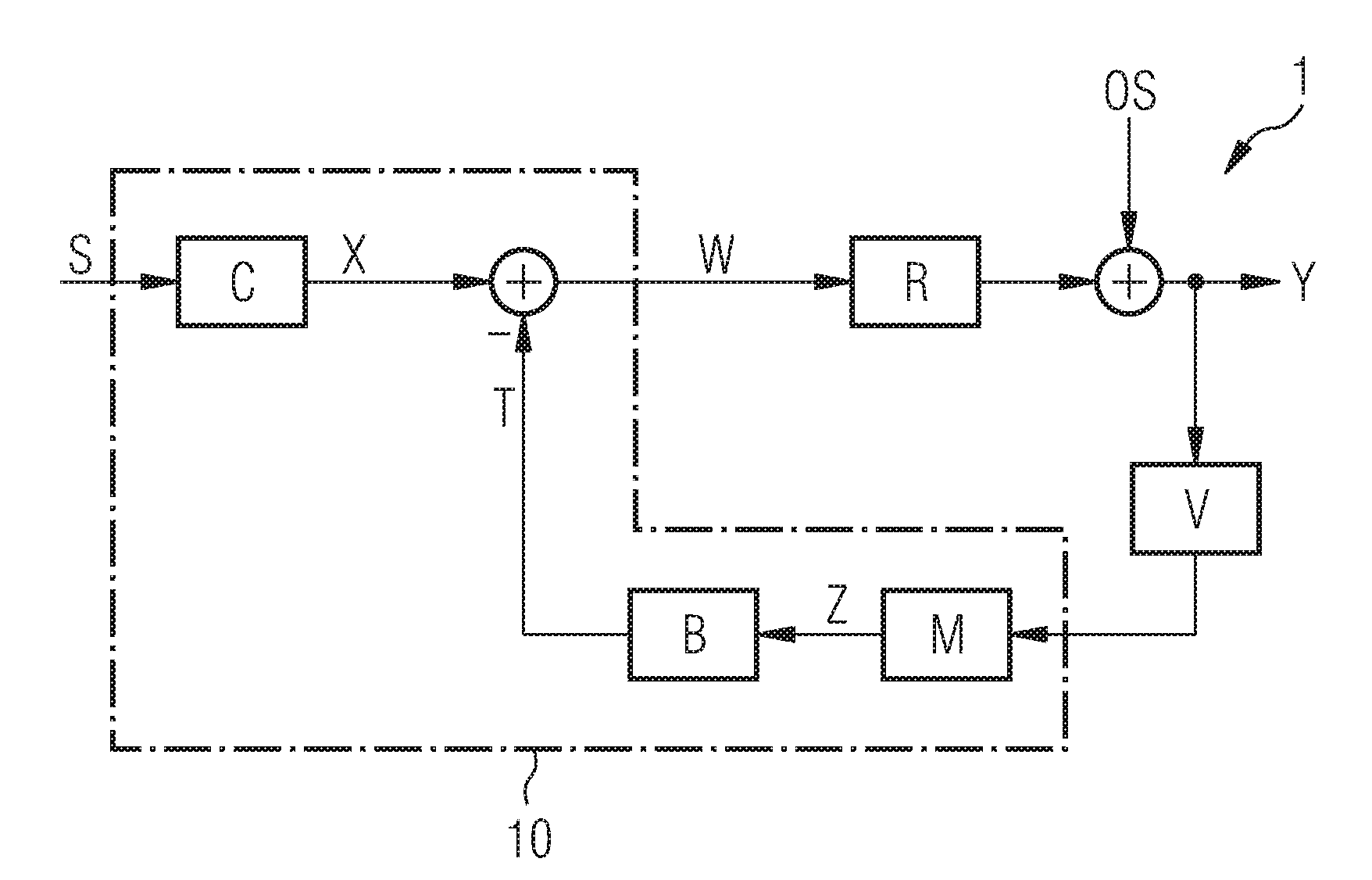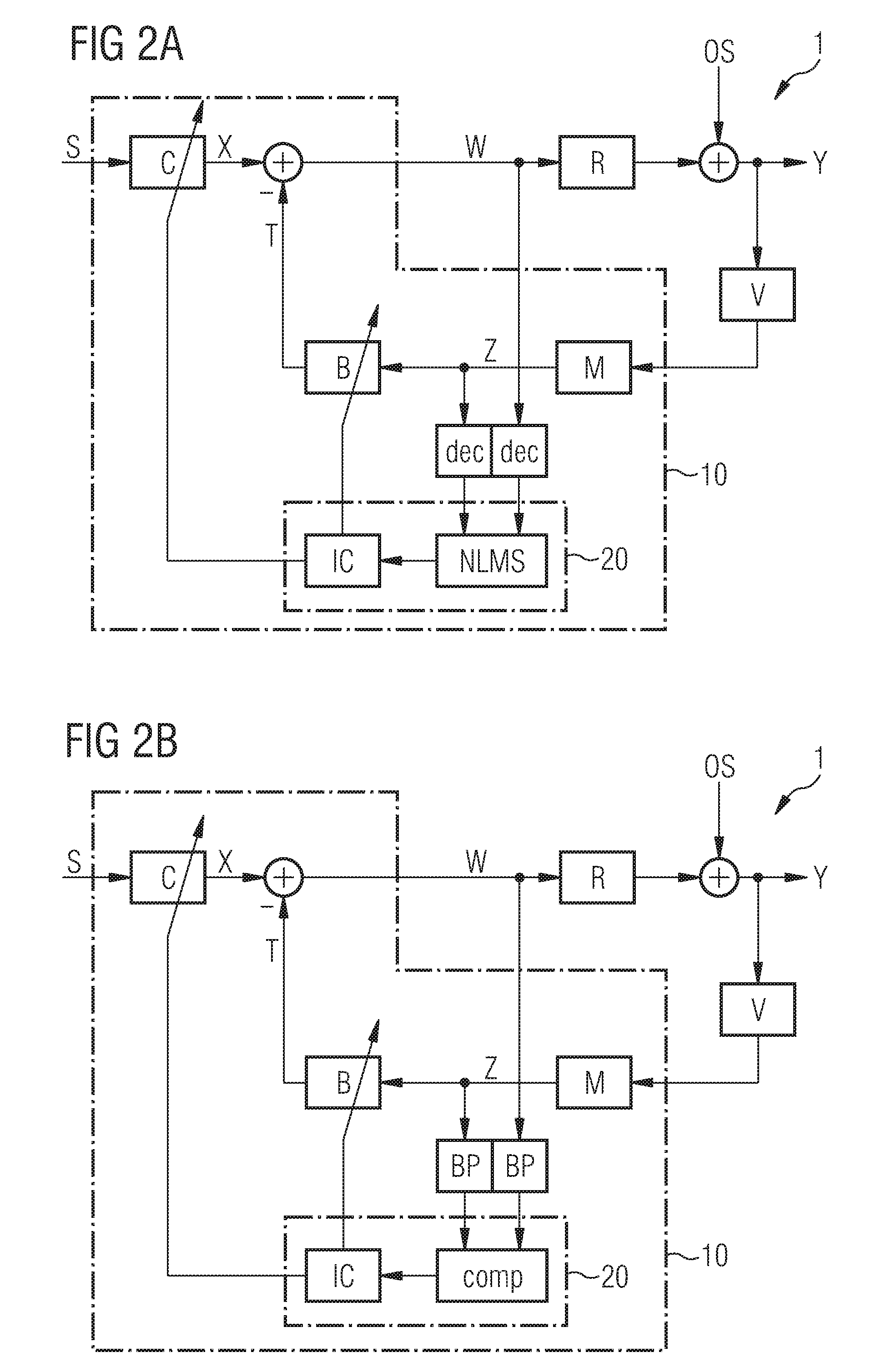Hearing Aid Having an Occlusion Reduction Unit and Method for Occlusion Reduction
a technology of occlusion reduction and hearing aid, which is applied in the field of hearing aids, can solve the problems of difficult to perceive complex environmental noises, such as speech, and the wearer of hearing aids' own voice is much louder and more distorted than normal, and achieves the effects of reducing the required computation complexity, loop gain, and loop gain
- Summary
- Abstract
- Description
- Claims
- Application Information
AI Technical Summary
Benefits of technology
Problems solved by technology
Method used
Image
Examples
Embodiment Construction
[0029]FIG. 1 shows, schematically, the configuration of a conventional acoustic appliance which is used as a hearing aid, having an occlusion reduction unit. The hearing aid, which may not only be in the form of a hearing aid but also an active noise protection appliance, has a transmission path for an audio signal S. Various signal processing components are arranged along the transmission path and are used to process the audio signal S. In this case, the audio signal S can be processed appropriately for the purpose of the acoustic appliance 1, with the aid of a signal processing unit. In the case of a hearing aid, the audio signal S is processed in the signal processing unit inter alia with the aid of filter and amplifier circuits, in order to compensate for the individual hearing loss. Since the signal processing in modern hearing aids is normally carried out digitally, this is preferably a digital signal processing processor DSP. At the end of the transmission path, the audio sig...
PUM
 Login to View More
Login to View More Abstract
Description
Claims
Application Information
 Login to View More
Login to View More - R&D
- Intellectual Property
- Life Sciences
- Materials
- Tech Scout
- Unparalleled Data Quality
- Higher Quality Content
- 60% Fewer Hallucinations
Browse by: Latest US Patents, China's latest patents, Technical Efficacy Thesaurus, Application Domain, Technology Topic, Popular Technical Reports.
© 2025 PatSnap. All rights reserved.Legal|Privacy policy|Modern Slavery Act Transparency Statement|Sitemap|About US| Contact US: help@patsnap.com



